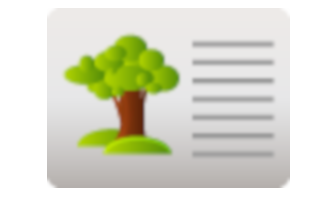Interdependence of Goods and Services
Social Studies, Grade 3
Interdependence of Goods and Services
Study Guide

Interdependence of Goods and Services
Flash Cards

Interdependence of Goods and Services
Quiz

Interdependence of Goods and Services
Worksheets

Interdependence of Goods and Services
Games

Study Guide Interdependence of Goods and Services Social Studies, Grade 3
❮
1
/
4
❯
INTERDEPENDENCE of WORLDWIDE GOODS AND SERVICES What is Interdependence? People in many communities depend on people in other communities for goods and services. Goods are products that are made or grown and then sold. Services are jobs that people do to serve one another. No one community has everything it needs to meet its basic needs. We need to transport goods and communicate our needs worldwide. Transportation allows goods and services to move quickly from one community to another. In cities and towns, goods can be moved by truck, car, van, bicycle and wagon. To go farther within our country, goods can be moved by truck, car, van as well as train or ship. In the early days of our country, canals were built between rivers and lakes to allow goods to move more freely by boat. Railroads connected some communities. It wasn’t until 1869 that the Transcontinental Railroad connected the whole country from coast to coast. Many goods are shipped by airfreight to go faster and farther. © Copyright NewPath Learning. All Rights Reserved. Permission is granted for the purchaser to print copies for non-commercial educational purposes only. Visit us at www.NewPathLearning.com.
To go across borders into other countries most goods are moved by ship or airplane. In the early days of our country only ships could cross the oceans. The first airplane was invented in 1903. Today large jets can carry goods quickly across the country or across the oceans. In 1914 The Panama Canal opened which saved ships almost 6000 miles around the tip of South America. Many large cargo ships still carry many goods from country to country. Most countries have ports where ships bring goods every day. Communication means transmitting information from one person to another. It allows us to share information about goods and services, wants and needs. In the early days of our country, writing a letter might have been the only way to communicate needs and wants. It would take several days for a letter to go from one place to another, usually on wagons or boats. Soon the Pony Express helped mail to move faster, because delivery men rode horses from town to town to deliver messages. © Copyright NewPath Learning. All Rights Reserved. Permission is granted for the purchaser to print copies for non-commercial educational purposes only. Visit us at www.NewPathLearning.com.
In 1844 Samuel Morse invented the telegraph which was able to send coded messages across wires from community to community. A telegraph operator would translate the Morse Code and write or type it in words to be delivered. At about the same time Alexander Bain invented the first facsimile machine that could send a copy of a page by wire. In 1876 Alexander Graham Bell invented the first telephone. But it took many years before all people could communicate by phone. In 1955 an improved facsimile machine could send a written message from one “fax” machine to another in just a few minutes. Today many businesses are able to fax information to one another. In 1962 communication satellites were sent into space to allow communication between countries. © Copyright NewPath Learning. All Rights Reserved. Permission is granted for the purchaser to print copies for non-commercial educational purposes only. Visit us at www.NewPathLearning.com.
From around 1990 until now the Internet, a series of connected computer networks, allows information to be sent instantly anywhere in the world. International Trade is sharing goods and services between different countries. All countries import products they need and export those they can share. Import means to bring materials and resources into a country. Some of the products the United States imports are bananas from Costa Rica, grapes from Chile, coffee from Columbia, oil from the Middle East. Export means to send products and resources to other countries. The US exports wheat, corn, books, movies, and video games, among many other things, to many countries. Try this! Look for labels on the foods you eat. Find out what countries they have come from. . © Copyright NewPath Learning. All Rights Reserved. Permission is granted for the purchaser to print copies for non-commercial educational purposes only. Visit us at www.NewPathLearning.com.
